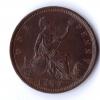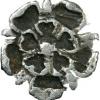I wonder if the die, having been annealed to soften for repair, might have had the developing die crack filled and polished at the same time that the ‘I’ was re-punched -a bit high, as you say -and perhaps colon repairs also? Thus two different stages in the life of a single die, though why wouldn’t the damaged ‘E’ be repaired as well….……?
A damaged ‘E’ punch could have been used creating the ‘F’, but it would have had to be used separately while undertaking die repairs in 1843 and 1844, unless the 1843 die was skilfully filled and altered to 1844, assuming the master die was undamaged.
The damaged ‘E-F’ looks so distinctive and similar that it is difficult to believe that it arose independently on different dies.
I find this all rather confusing. Time for a beer- it’s the bellringers Christmas do tonight, much cheaper in January.
Jerry
 Coinpublications.com
Coinpublications.com






